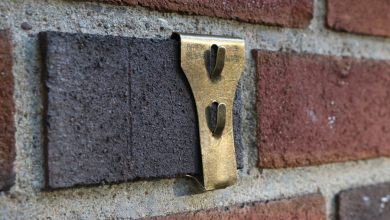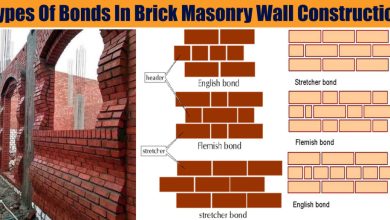How to Mix Masonry Sand
To mix masonry sand, you can either use a mortar mix or make it from scratch using Portland cement, fine masonry sand, and water.
If you opt for a mortar mix, follow the instructions in terms of mixing ratios and times.
For a scratch-made mix, the standard ratio is one part Portland cement to three parts sand, though this can vary.
Dry mix the cement and sand in a separate container until fully blended.
Some mortars may include hydrated lime, in which case you would replace about 10% of the cement.
When mixing, take safety precautions by wearing goggles, gloves, long sleeves, and a respirator mask.
Mixing outdoors is recommended, with the wind blowing away from you.
Before adding the sand, ensure it is sifted through a 1/4-inch wire screen to remove any unsuitable stones.
Check this out:
Did You Know?
1. Did you know that masonry sand is also known as brick sand or joint sand?
2. Before it was used for construction purposes, masonry sand was historically used for creating molds in metal casting.
3. Mixing masonry sand with cement creates a key ingredient in mortar, which is essential for building strong and durable walls.
4. Masonry sand typically has a granular texture, making it ideal for creating smooth finishes on surfaces like bricks or stones.
5. Unlike other types of sand, masonry sand undergoes a screening process to remove any impurities, ensuring its quality and uniformity.
Using A Mortar Mix For Consistent Strength And Appearance
When it comes to mixing mortar, there are two options available: using a pre-made mortar mix or making mortar from scratch. Using a pre-made mortar mix is highly recommended for larger jobs that require multiple batches as it ensures consistent strength and appearance throughout the project.
It is important to follow the instructions provided by the manufacturer as different mortar mixes may have varying ratios and mixing times. By using a pre-made mix, you can save time and effort that would otherwise be spent calculating the correct proportions of cement and sand.
Standard Mortar Mixing Ratio And Variations
The standard mortar mixing ratio is generally one part Portland cement to three parts sand. However, it’s important to note that this ratio may vary depending on the specific type of mortar needed for your project. For instance, certain types of mortar, such as those used for bricklaying or pointing, may require slight adjustments in the mixing ratio.
It’s always a good idea to consult the specific guidelines or recommendations provided by the manufacturer to ensure that you achieve the desired consistency and strength for your mortar mix.
Dry Mixing Cement And Sand For A Complete Mix
To create a well-mixed mortar, thoroughly combine the cement and sand. Start by measuring out the required amounts of cement and sand and placing them in a clean container. It’s recommended to use a mortar trowel or a hoe for this process.
Once the cement and sand are in the container, use the mortar trowel or hoe to fold them together. Continue mixing until the two materials are completely blended. This dry mixing process helps ensure that the cement and sand particles are evenly distributed, which is crucial for achieving a consistent and strong mortar mix.
Importance Of Hydrated Lime And Replacement Guidelines
Some types of mortar may include hydrated lime as an additive. Lime improves workability and provides better water resistance to the mortar.
If you are using a pre-made mix that already contains hydrated lime, follow the manufacturer’s instructions on the mixing ratio.
If you are making mortar from scratch and would like to add hydrated lime, a general guideline is to replace approximately 10% of the cement with lime. This replacement percentage may vary depending on the desired properties of the mortar and the specific type of lime being used.
Always consult the manufacturer’s recommendations for the best results.
- Consider using pre-made mixes that already contain hydrated lime for convenience.
- When making mortar from scratch, replace about 10% of the cement with lime.
- The specific replacement percentage can vary based on the desired properties of the mortar and type of lime used.
Safety Precautions For Mixing Mortar
Mixing mortar involves handling potentially hazardous materials, so it’s crucial to take appropriate safety precautions.
Before you begin, make sure to wear goggles, work gloves, and long sleeves to protect yourself from any accidental contact with the mortar mix. Additionally, wearing a respirator mask is important to prevent inhalation of particles.
- Wear goggles, work gloves, and long sleeves
- Use a respirator mask to prevent inhalation of particles.
It is recommended to mix the mortar outdoors, if possible, to ensure proper ventilation.
If you have to mix indoors, ensure that the area is well-ventilated and that you have access to fresh air.
- Mix outdoors for proper ventilation
- If indoors, ensure well-ventilated area and access to fresh air.
It’s also important to position yourself in a way that allows the wind, if present, to blow away from you. This will help prevent any airborne particles from coming into contact with your face.
“Position yourself in a way that allows the wind to blow away from you.”
Tips For Outdoor Mixing And Preparation Of Sand
When mixing mortar outdoors, there are several tips that can help streamline the process. First, choose a level and dry area for mixing. This will make it easier to achieve a consistent mix and prevent any potential water accumulation.
Before adding the sand to the mix, it’s a good practice to sift it through a 1/4-inch wire screen. This will remove any large or coarse stones that may not be suitable for the mortar. Sifting will ensure that the sand used is fine and free from any impurities, resulting in a smoother and more workable mortar mix.
When mixing masonry sand, you have the option of either using a mortar mix or making mortar from scratch. It is important to follow the recommended mixing ratios and instructions provided by the manufacturer to ensure consistent strength and appearance.
Safety precautions, such as wearing the appropriate protective gear and working in a well-ventilated area, should always be observed. By implementing these tips and guidelines, you can confidently mix masonry sand and achieve excellent results for your project.
Frequently Asked Questions
What ratio do you mix masonry sand with?
The ideal ratio for mixing masonry sand is typically one part masonry sand to two parts Portland cement. This combination ensures a strong and durable mortar mix, suitable for various construction applications such as bricklaying or stonework. The precise proportion of masonry sand to Portland cement is essential for achieving the desired level of workability, strength, and adhesive properties in the mortar mixture.
What is the best mix for masonry?
The best mix for masonry depends on the specific application and desired strength. For bricklaying, a standard mortar mix ratio of 3:1 or 4:1 is commonly used. However, when using a pointing mix, a ratio of 1:4 or 1:5 mortar to sand is recommended. For concrete, the ideal mix ratio varies depending on the required strength. Generally, a 1:2 mix to materials is a good practice. It is important to consider the specific needs of the project and consult local building codes to ensure the best mix is used for optimal durability and safety.
What is the ratio of sand to water in mortar mix?
The ratio of sand to water in mortar mix is 3:1. This means that for every unit of water used, three units of sand are needed. This ratio ensures the right balance of ingredients, allowing the mortar to have the appropriate consistency and strength for various construction applications. By adhering to this ratio, builders can create a reliable mortar mixture that is suitable for their specific project.
What is the ratio for masonry?
The ratio for masonry depends on the type of masonry work being done. For brick masonry, commonly used ratios are 1 : 3, 1 : 4, 1 : 5, and 1 : 6 for cement to sand. Reinforced concrete, on the other hand, typically requires ratios of 1 : 2, 1 : 1.5, or 1 : 1 for cement to sand. Plastering work usually involves ratios of 1 : 2, 1 : 3, 1 : 4, or 1 : 5 for cement to sand. These ratios ensure the proper mix and strength for each specific type of masonry application.


